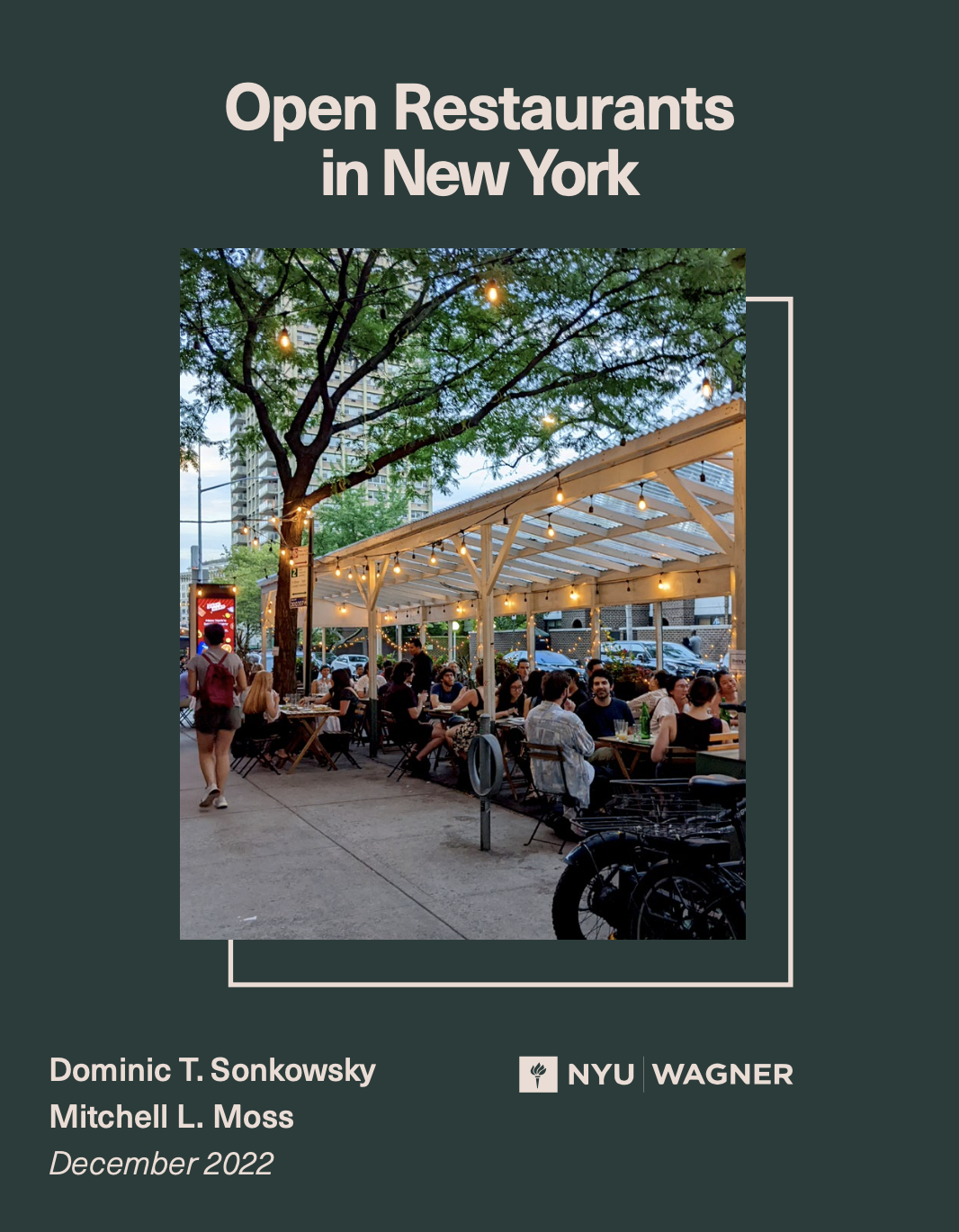Open Restaurants in New York
New York City’s Open Restaurants outdoor dining program began in June 2020. This municipal program has transformed the streets and sidewalks of the city. Today, more than 12,000 cafes, bars, and restaurants use sidewalk and/or parking lane space to serve customers. But, of even greater importance, Open Restaurants has made outdoor dining more accessible to residents, visitors, and small businesses in neighborhoods across New York City's five boroughs.
Open Restaurants has especially fostered the growth of outdoor dining beyond the established restaurant corridors of Manhattan. This report compares New York City’s old Sidewalk Café outdoor dining program with its replacement: Open Restaurants. It highlights how Open Restaurants has led to new outdoor dining opportunities outside Manhattan, in communities that had no prior outside dining, and in communities of color and low-income neighborhoods as well. The findings of this report are striking:
-
The four outer boroughs collectively had 30% of the city’s pre-pandemic Sidewalk Cafés.
They now have 51% of Open Restaurants.
-
Communities of color have doubled their share of New York City’s outdoor dining
establishments under Open Restaurants (41% of Open Restaurants located in Community
Districts with majority-nonwhite populations, up from 20% of pre-pandemic Sidewalk Cafés).
-
Low-income communities have nearly doubled their share of New York City’s outdoor dining establishments under Open Restaurants (31% of Open Restaurants located in Community Districts with a median household income of $60,000 or less, up from 17% of pre-pandemic Sidewalk Cafés).
-
The 17 Community Districts that had no outdoor dining under the Sidewalk Café program in June 2020 now have outdoor dining under the Open Restaurants program.
This remarkable growth in communities across the city would not have been possible
under New York City’s pre-pandemic Sidewalk Café program. Under that program, cafes, bars, and restaurants seeking outdoor seating had to undergo a lengthy review process and pay steep revocable consent fees, assuming their zoning allowed it. The disproportionate regulatory burden concentrated outdoor dining in a limited number of Manhattan neighborhoods, where more businesses had the organizational and financial resources to obtain a Sidewalk Café license.
Open Restaurants has also generated considerable opposition, stemming from serious concerns about noise, safety, and sanitation. The debate that has arisen over who and what occupies the sidewalk curb demonstrates the central role public space plays in the lives of New Yorkers. It also emphasizes how critical it is that New York City's municipal government recognize the competing
values raised by outdoor dining.
This report recommends that New York City’s municipal government build upon OpenRestaurants and recognize that greater citywide access to outdoor dining is one of the unanticipated benefits that has emerged from the Covid-19 pandemic. Outdoor dining has helped save jobs in the restaurant industry. It has fostered a new pattern of activity on our streets and sidewalks that has strengthened local communities and their economic vitality. New York City should learn from the experience of the past two years with Open Restaurants as it considers outdoor dining in all neighborhoods as a permanent part of the city’s streetscape. To achieve that goal, this report offers four policy recommendations for permanent outdoor dining:
-
Create a streamlined permit application process
-
Limit permit fees so small establishments can participate in outdoor dining
-
Allow year-round outdoor dining
-
Produce more free-to-all public outdoor space by streamlining the Street Seats program
